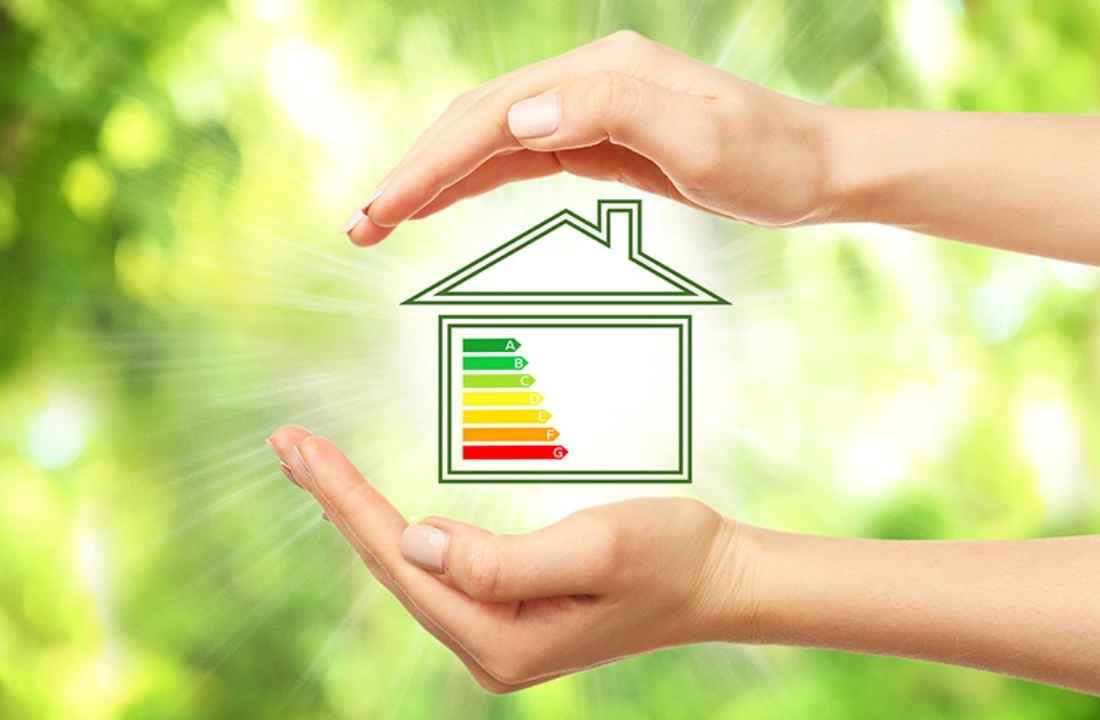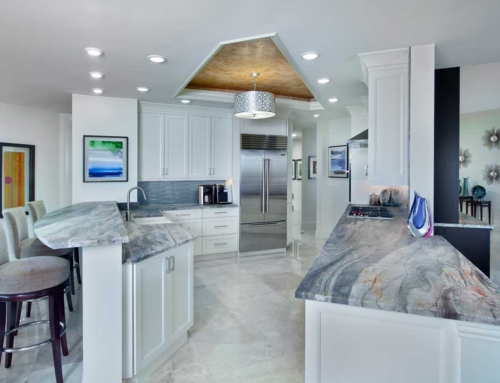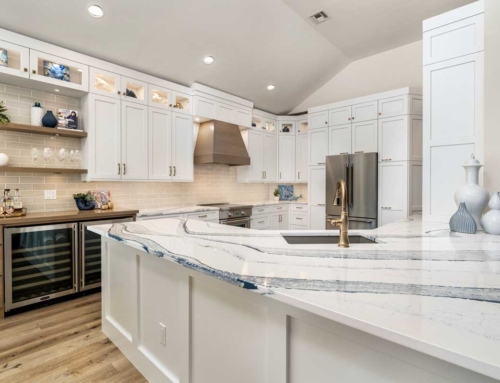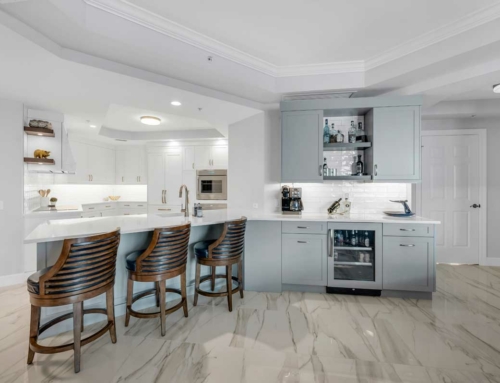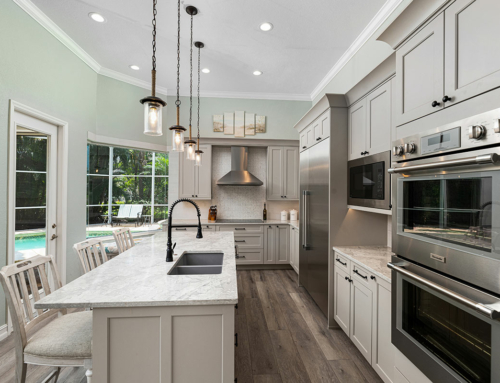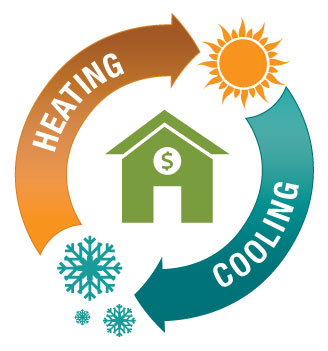
If you’re considering a home remodel, don’t forget to put energy efficiency at the top of your wish list. Apart from drastically cutting your utility bills and reducing waste, an energy-efficient home is better for the environment. And, who doesn’t want to protect the gorgeous Southwest Florida landscape? Making just a few adjustments can have a positive impact on the environment, as well as your pocketbook. Here are five helpful tips to consider for creating a more energy-efficient home:
Home Energy Audit
Like our annual physical exams, a home energy audit or assessment is an excellent way to determine how efficient (or inefficient) your home currently is. Its purpose is to help you identify modifications that could save your household money—immediately and over time. Auditors will check for leaks around your windows and doors, examine your insulation, and check your appliances, furnace, and ductwork. The auditor’s report may also include recommendations for weatherizing your home.
Weatherizing a home is simply the process of protecting the interior and exterior of your house from outside elements including sunlight, precipitation, and wind, while at the same time reducing energy consumption and optimizing energy efficiency. Your home energy audit will include a close inspection of the insulation in your walls, ceilings, and floors. It will also identify any small holes in your roof, any leaking pipes, or where you may need to seal air leaks throughout your home.
Heating/Cooling
According to www.energy.gov, space heating and cooling account for almost 50% of a home’s energy use, while water heating accounts for 18%. Together, these two areas alone account for nearly 70% of the home’s energy expenses. That’s significant!
While Florida residents rarely need to heat their homes, we do run our air conditioning units. A great way to reduce the cost of your cooling bills is by installing a smart thermostat, which can be set to automatically adjust the temperature in your home, whether you’re home or away, awake or asleep.
If you’re remodeling an older home, you may need to replace your heating/cooling system altogether with a properly-sized, high-efficiency system. While you may pay more for this system up front, the money that you will save over time will more than pay for itself.
Home Appliances
Many older appliances (manufactured before 2011), such as dishwashers and refrigerators, are energy wasters that consume unnecessary amounts of energy. Thankfully, manufacturers have steadily improved the power and efficiency of their product offerings over the last several years. This may be due, in part, to the Energy Star Program, which was created by the U.S. Environmental Protection Agency and the U.S. Department of Energy in May of 2011, to help consumers save money and reduce the amount of air pollution. Appliances labeled with the Energy Star symbol are products independently certified to save you money and protect the environment without sacrificing features or functionality.
Water Consumption
Water is a precious commodity no matter where you live. While we seem to have more than enough water in Southwest Florida, it’s still important to protect this valuable resource. Installing a water filtration system in your home is a great way to eliminate your use of water bottles that, more often than not, end up in landfills.
Something else to consider…low volume high-efficiency toilets use around 20% less water than their standard counterparts and make it easy for you to conserve water and save money. Low flow showerheads have also improved immensely over the years—to the point that you no longer have to feel like you’re standing under a trickle when you’re trying to get clean and conserve water.
Lighting
LED light bulbs have changed the landscape of lighting forever. Yes, they may cost a bit more than incandescent or halogen bulbs, but the higher cost is quickly offset by the significant benefit of prolonged use (a typical LED bulb lasts more than 50,000 hours, or 20 to 25 years, compared to an incandescent bulb that typically lasts 1,000 to 2,000 hours, or a halogen bulb which lasts 12,000 hours or about 11 years). In addition, LED lights contain no mercury or harmful toxins and don’t emit dangerous UV rays. Moreover, a bulb that lasts 50,000 hours results in fewer purchases and thus less waste in the landfills.
If you’re considering a remodel, remember, with just a few modifications, your home can help you save money, reduce waste and protect the environment. Call Progressive Design Build today to discuss your home remodeling needs and how we can help you make your home more energy efficient.

